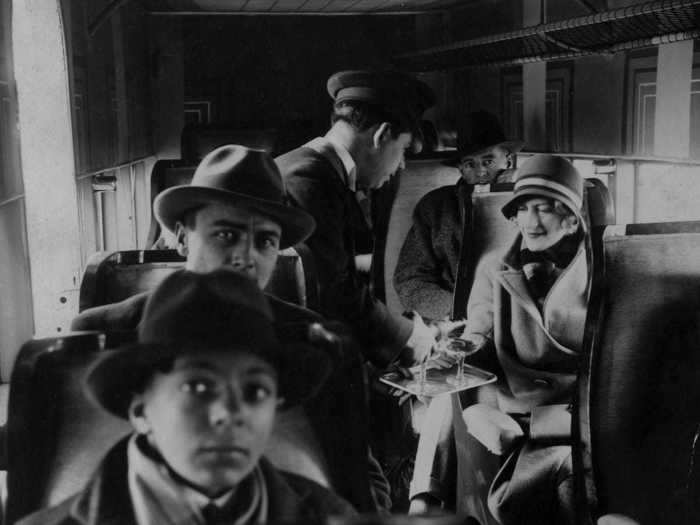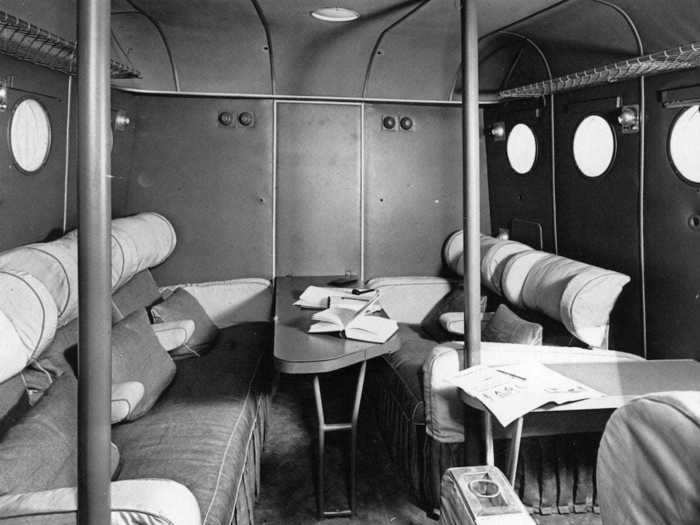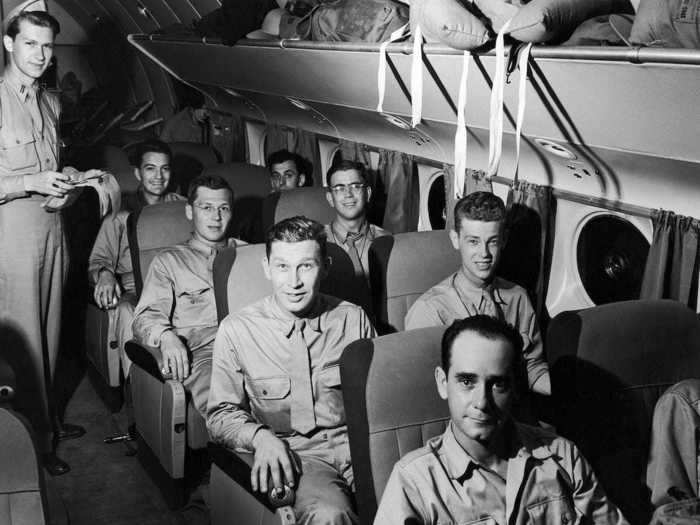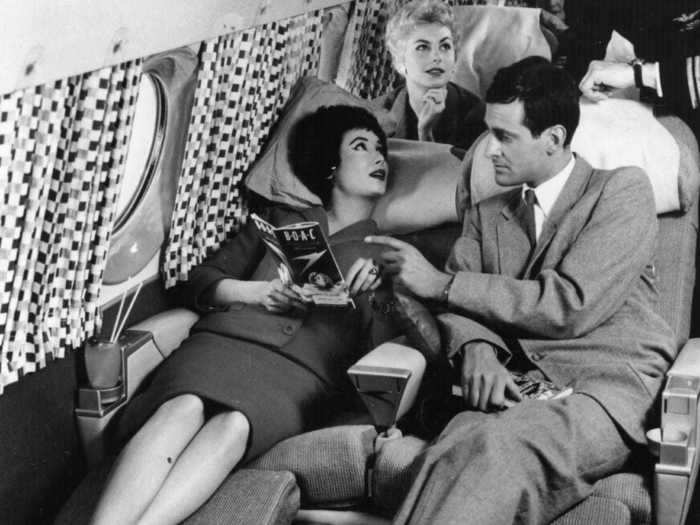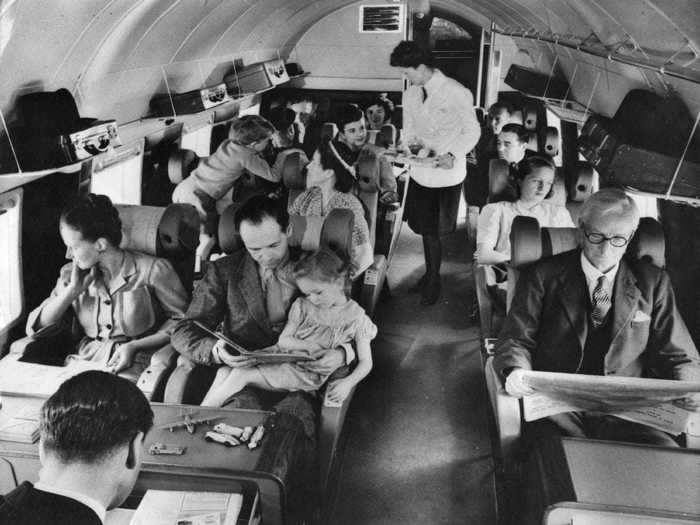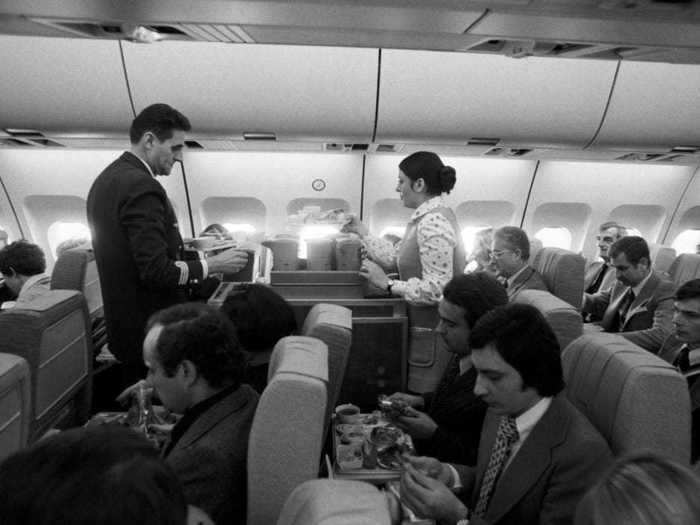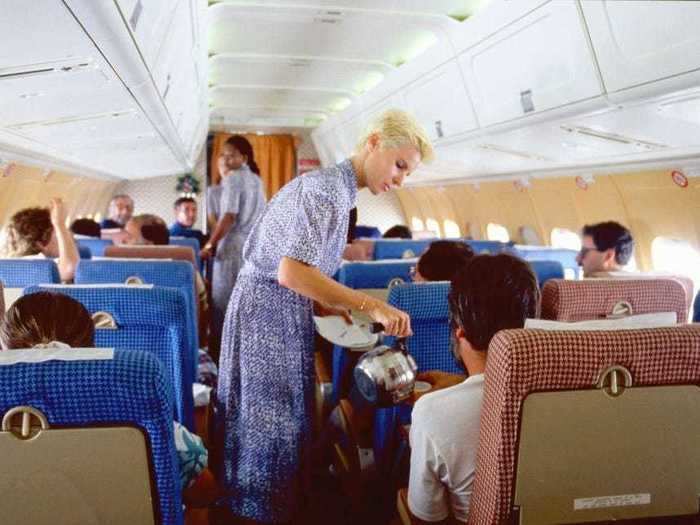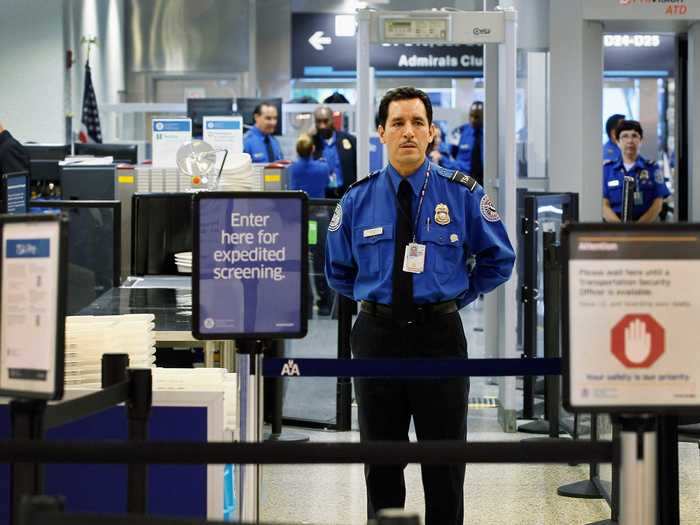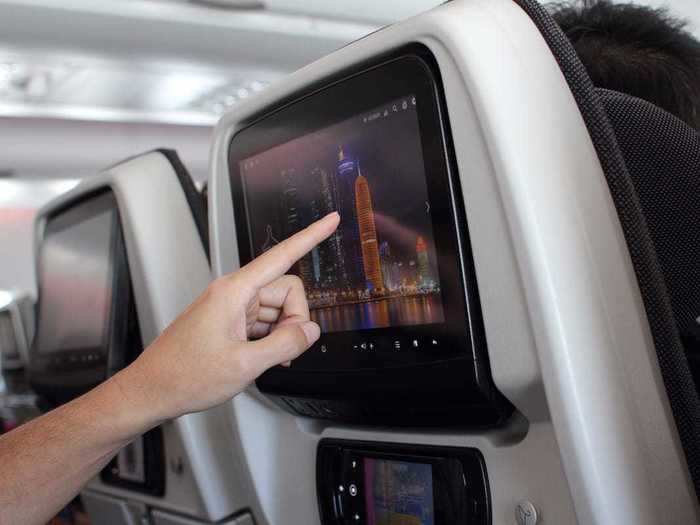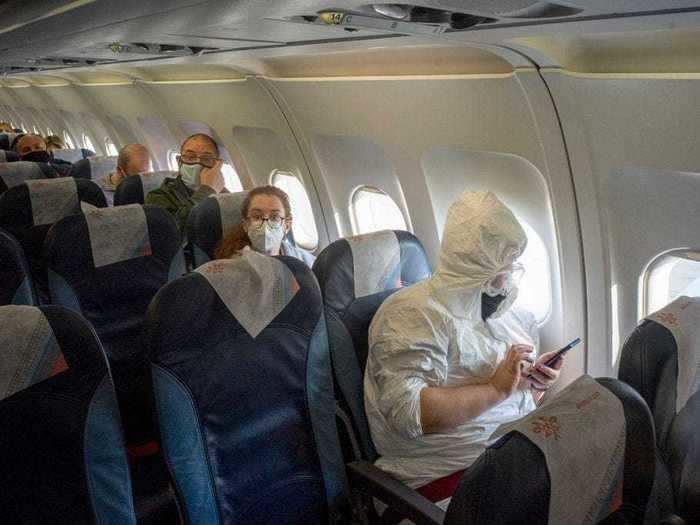A plane cabin in the1960s.Fox Photos / Stringer / Getty Images
- The 1950s are widely known as the golden age of air travel, as flying was then a glamorous affair.
- Before that, flights were super loud, cold, and unpressurized.
- Today, at least pre-pandemic, flying is all about having the same conveniences we are used to having on the ground.
- Amid the global coronavirus pandemic, food and beverage service has been cut on many flights, and masks are required.
- While the Centers for Disease Control and Prevention no longer advises against nonessential travel, it does warn that "travel increases your chance of getting and spreading COVID-19."
Air travel has changed drastically throughout the decades.
From the very first flight in the early 1900s to seat-side, hand-carved hams in the 1950s, to today's touchscreen entertainment systems, air travel has come a long way.
Keep scrolling to see what air travel looked like in every decade.
Planes in the 1920s shook loudly and were unpressurized. Air travel was often slower than train travel.
In the 1920s, people bundled up for flights.
Fox Photos / Stringer / Getty Images
The 1920s saw the first planes designed exclusively for passengers.
Planes during this time usually held fewer than 20 passengers, reached a cruising altitude of 3,000 feet or less, and were slower than traveling by train. During this time, planes were flying at speeds of around 100 mph, had to stop to refuel often, and could only travel by day.
Flying in the 1920s was also an uncomfortable experience for passengers because it was loud and cold, as planes were made of uninsulated sheets of metal that shook loudly in the wind.
Cabins were also completely unpressurized.
Nonetheless, air travel gained in popularity.
Flight attendants were introduced in the 1930s, and flights generally became more comfortable.
A plane cabin in 1936.
Fox Photos / Stringer / Getty Images
In the 1930s, female flight attendants, then called stewardesses, were first introduced to make flying more comfortable. Their roles were similar to current-day flight attendants.
However, the first African-American flight attendant, Ruth Carol Taylor, didn't take to the skies until 1958.
Not only was the service better than in the 1920s, but airplanes themselves had become more comfortable. They were soundproofed, heated, and the seats were upholstered.
The planes could also fly much higher, reaching an altitude of around 20,000 feet, which reduced turbulence and made travel by aircraft a lot faster (around 200 mph).
The first pressurized commercial transport aircraft was introduced in 1938.
Cabins were also roomier, and seating was more creative with couches, reclining chairs, and swiveling seats.
In the 1940s, World War II changed commercial air travel.
Troops onboard a transport plane in 1943.
AP
During World War II, planes were being developed for the purpose of war, rather than commercial flight.
According to the Smithsonian National Air and Space Museum, "Few members of minority groups flew before World War II. But as the economy rapidly expanded and the number of minority-owned businesses increased, more people of color began to fly."
These, however, often faced discrimination, as many airports were segregated at the time: air travel remained mostly white.
Once the war ended, the US and Europe were left with a lot of planes, as well as large new airbases with long runways, which they repurposed for commercial flight.
New airports were built closer to Europe's main cities, like today's London Heathrow Airport, which was finished in 1946. Transatlantic flight, such as between New York and London, became a daily occurrence.
The 1950s are widely known as the golden age of air travel.
Passengers relaxing in lie-flat seats in the 1950s.
Douglas Miller / Stringer / Getty Images
Despite being known as the golden age of air travel, flying in the '50s was not cheap. In fact, a roundtrip flight from Chicago to Phoenix could cost today's equivalent of $1,168 when adjusted for inflation. A one-way flight to Europe could cost more than $3,000 in today's dollars.
Passengers got what they paid for, though. Flying was extremely glamorous: people dressed up, booze was served in fancy glassware, and meals consisted of dishes like roast beef, lobster, and prime rib.
However, while plane cabins were mostly integrated, some US airports were segregated until as late as 1963, Air & Space Magazine reports, despite desegregation efforts having begun in 1948.
Flying was becoming more and more mundane in the 1960s, and was generally a relaxed affair.
A plane cabin in the1960s.
Fox Photos / Stringer / Getty Images
Flying became more and more common in the 1960s. Passengers didn't dress up as much as before, though they typically dressed up more than passengers do today.
Passengers flying in the 1960s could also fly without any form of ID. That meant that they could just show up at the airport half an hour before departure and walk straight up to the gate.
Even loved ones could walk all the way to the gate without a ticket to send people on their way.
While a couple of exceptions exist, such as the aforementioned flight attendant Ruth Carol Taylor, African Americans were not allowed to work on planes in any capacity until the 1960s, according to the Smithsonian National Air and Space Museum. Marlon D. Green became the first commercial African-American pilot in 1965, paving the way for others.
Security screenings didn't become mandatory until the early 1970s when bigger flights meant more passengers.
A flight between Paris and Marseille, France, on November 25, 1976.
François LOCHON/Gamma-Rapho/Getty Images
Security screenings didn't become mandatory until 1973, and even those were pretty relaxed compared to the airport security we go through today.
The "Jumbo Jet" opened up the skies for millions of travelers who previously couldn't afford it in 1970. Airlines, now able to fly large amounts of passengers, could now sell tickets at a more reasonable price.
Still, there was plenty of legroom and flight attendants catering to passengers' every need.
From 1970 to around 1974, American Airlines even featured a piano lounge in the rear of their 747s, while Pan Am's 707 Clipper was advertised as being "vibration-free."
In the 1980s you could smoke cigarettes, meals were included, and you could check as many bags as you wanted.
Flight attendants in 1986, on a plane traveling from Madrid to Barcelona, Spain.
Gianni Ferrari/Cover/Getty Images
Flying saw some fun arrangements in the '80s.
Continental Airlines (now United Airlines) even tested out a "Pub" configuration complete with a bar stocked with alcohol and circular tables surrounded by swivel chairs.
Passengers could also make a visit to the cockpit during the flight where children were given a commemorative wing pin to remember the experience.
In the 1990s, inflight entertainment started becoming a thing.
Inside a Boeing 737-300 cabin in 1998.
Etienne DE MALGLAIVE/Gamma-Rapho/Getty Images
Air travel in the '90s meant that all passengers of age, economy class included, could indulge in free liquor on international and domestic flights.
Inflight meals, though not the tastiest, were also free, seats were outfitted with phones, and inflight entertainment was in its nascent stages.
In the 2000s, 9/11 in 2001 significantly changed airport security.
The Transportation Security Administration (TSA) was established in 2001.
Joe Raedle/Getty Images
After 9/11 in 2001, air travel changed drastically.
Before 9/11, the Transportation Security Administration (TSA) didn't even exist. Travelers could go through security with items including liquids, small pocket knives, and wearing bulky jackets. Passengers could also keep their shoes on.
All that changed after 9/11 and airport security became much stricter, cockpit doors were reinforced and locked, and only ticketed travelers were allowed at airline gate areas.
In the 2010s, passengers began to expect the same conveniences on planes they were used to having on the ground.
A touchscreen TV on a modern-day flight.
Mizkit / Shutterstock
From private touchscreen TVs to USB chargers in every seat, plane passengers wanted to have all the modern amenities they are used to having on the ground.
However, air travel also began to mean grappling with extra fees for everything from carry-ons to seat assignments, and free meals are a rarity.
The global coronavirus pandemic brought significant changes to air travel in 2020.
Face masks are now required on practically all airlines.
Milos Bicanski/Getty Images

